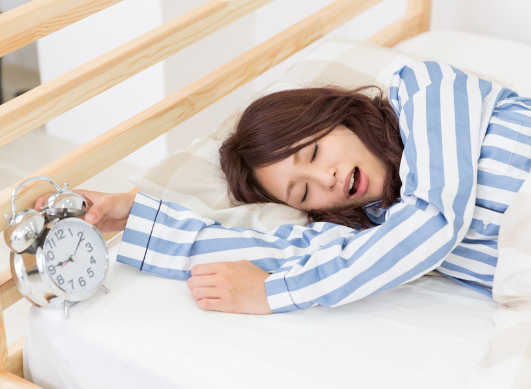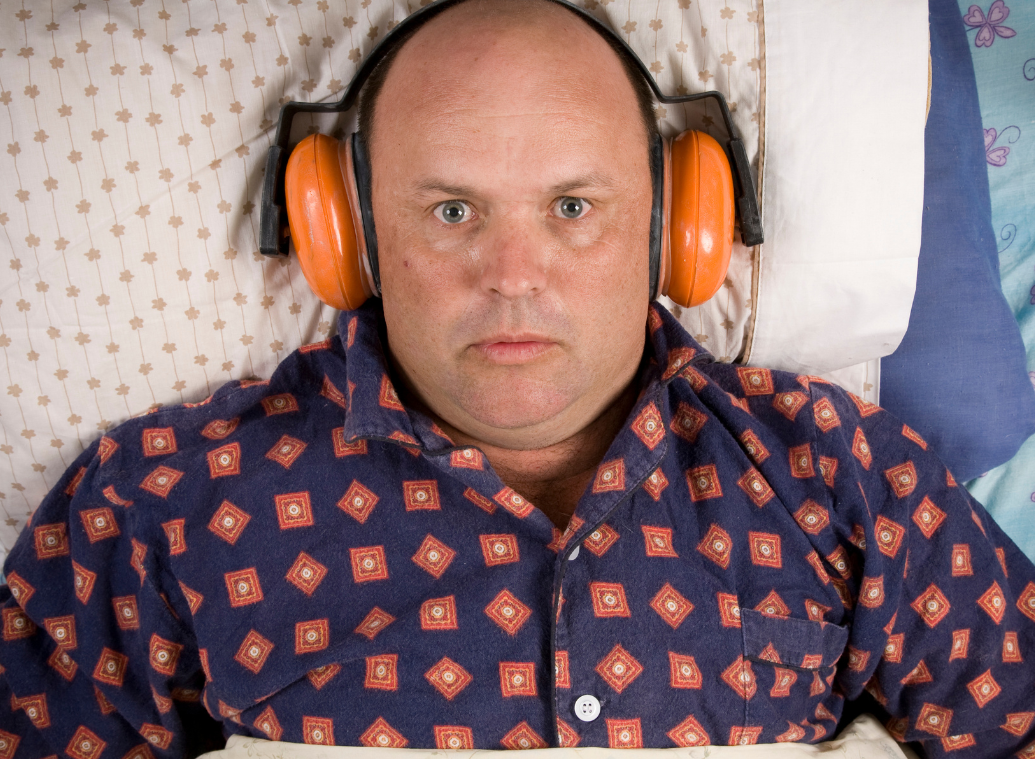- Home
- Forums
- General forums
- Good to know
- Everything you wanted to know about sunscreens and skin protection
Everything you wanted to know about sunscreens and skin protection
- 31 views
- 0 support
- 1 comment
All comments

lesmal
AmbassadorGood advisor
![]()
lesmal
Ambassador
Last activity on 20/12/2025 at 12:25
Joined in 2018
1,530 comments posted | 158 in the Good to know group
80 of their responses were helpful to members
Rewards
-
Good Advisor
-
Contributor
-
Messenger
-
Committed
-
Explorer
-
Evaluator
Thank you for great information and also for details on the App.
From a young age I was always in the sun, swimming, diving, playing hockey and other sports. As I got older the effect of the sun caused dermatitis, eczema and bad allergies due to UV rays, My skin got more sensitive as the years continued, and due to this sensitivity anti-histamine medication now has to be taken. Sunscreen lotions all have certain chemicals also, which can react to one's skin type, cause hives, allergic reactions etc. so this is not always an option for everyone. If one has a health problem, certain drugs can also cause skin reactions.
When one knows one is out in the sunshine for a long period, ensure you wear a hat, try and find a good pair of sunglasses to protect yourself as much as possible, and wear sunscreen if your skin will allow it!
See the signature
Les
Give your opinion
Survey
Articles to discover...
Subscribe
You wish to be notified of new comments
Your subscription has been taken into account








Margarita_k
Good advisor
Margarita_k
Last activity on 07/10/2020 at 11:39
Joined in 2016
1,195 comments posted | 118 in the Good to know group
2 of their responses were helpful to members
Rewards
Good Advisor
Contributor
Messenger
Committed
Explorer
Evaluator
The following information has been created by the British Association of Dermatologists to provide education on sun awareness and assist you in choosing the right product for you.
Why should we be careful?
Nobody wants to spend the entire summer indoors, and indeed some sunshine, below sunburn level, can be good for us, helping the body to create vitamin D and giving many of us a feeling of general wellbeing as we enjoy outdoor summer activities.
However, all too often we over-do our sun exposure which can lead to a range of skin problems, the most serious of which include skin cancer. Other summertime skin problems include sunburn, photosensitive rashes and prickly heat. In addition, sun exposure can worsen already existing conditions like rosacea.
While many people associate a tan with looking healthy, a tan is actually a sign that our skin has been harmed by UV radiation and is trying to defend itself against further damage. This kind of damage can in turn increase your risk of developing skin cancer: Sunburn (i.e. skin redness) and heavy tans can never be justified and are harmful.
More than 100,000 new cases of skin cancer are diagnosed annually in the UK, and while the disease can also occur on parts of the body not exposed to sunlight, extensive sun exposure is thought to be responsible for the vast majority of cases. In more than four out of five cases skin cancer is a preventable disease.
UVA and UVB
UV radiation from the sun is transmitted in three wavelengths – UVA, UVB and UVC. UVC does not penetrate the earth’s atmosphere, so we only really need to protect against UVA and UVB.
UV irradiation in the form of UVA is associated with skin ageing. UVA affects the elastin in the skin and leads to wrinkles and sun-induced skin ageing (for example coarse wrinkles, leathery skin and brown pigmentation), as well as skin cancer.
UVA can penetrate window glass and penetrates the skin more deeply than UVB. UVA protection in a sunscreen will help defend the skin against photo ageing and potentially skin cancer.
UVB is the form of UV irradiation most responsible for sunburn and has strong links to malignant melanoma and basal cell carcinoma risk (types of skin cancer). A sunscreen with a high SPF (sun protection factor) will help block UVB rays and prevent the skin from burning, and by extension damage that can cause skin cancer.
How do sunscreens work?
Organic filters absorb harmful UV radiation and convert and give this energy back out as infrared. These are sometimes known as ‘absorbers’, or ‘chemical’ sunscreens. Note that organic filters does not mean ‘organic’ in the environmental sense.
Inorganic filters (also known as ‘physical’, ‘natural’, ‘reflective’, ‘zinc’) contain titanium dioxide or zinc oxide, which reflect UV radiation away from the skin.
It can be helpful to think of organic filters as sponges, mopping up the UV radiation, and inorganic filters as mirrors, bouncing UV straight back off the skin.
What is SPF?
Sunscreens in the UK are labelled with an ‘SPF’. This stands for ‘sun protection factor’, although the SPF is more accurately the sun burn protection factor, as it primarily shows the level of protection against UVB, not the protection against UVA. SPFs are rated on a scale of 2-50+ based on the level of protection they offer, with ratings between 2 to 14 forming the least protected end of the spectrum and ratings of 50+ offering the strongest forms of UVB protection. We recommend a sunscreen with an SPF of 30 as a satisfactory form of sun protection in addition to protective shade and clothing.
UVA star system
When you currently buy sunscreen containing UVA protection in the UK you may notice a UVA star rating on the packaging. The stars range from 0 to 5 and indicate the percentage of UVA radiation absorbed by the sunscreen in comparison to UVB, in other words the ratio between the level of protection afforded by the UVA protection and the UVB protection.
Be aware that if you choose a low SPF it may still have a high level of stars, not because it is providing lots of UVA protection, but because the ratio between the UVA and UVB protection is about the same.
That’s why it’s important to choose a high SPF as well as a high UVA protection (e.g. a high number of stars). Sunscreens that offer both UVA and UVB protection are sometimes called ‘broad spectrum’. A sunscreen with an SPF of 30 and a UVA rating of 4 or 5 stars is generally considered as a good standard of sun protection in addition to shade and clothing.
Sunscreen labelling
To be in accordance with EU Recommendations sunscreen manufacturers have to label their products in the UK as follows.
As well as the SPF number, the SPFs are categorised as providing low to very high protection, to make the SPF guide easier to understand. The below table illustrates this:
Label SPF:
Low protection - 6 to 14 (i.e. SPF 6 and 10)
Medium protection - 15 to 29 (i.e. SPF 15, 20 and 25)
High protection - 30 to 50 (i.e. SPF 30 and 50)
Very high protection - 50 + (i.e. SPF 50+)
According to the EU Recommendation, the UVA protection for each sunscreen should be at least a third of the labelled SPF. A product that achieves this requirement will be labelled with a UVA logo, the letters “UVA” printed in a circle
What is photostability?
You should also check that your chosen sun protection is photostable. ‘Photostability’ means that the filters do not break down in the sun.
One application a day sun protection products
You may be aware of some sun protection products which offer 8+ hours of protection from one application. In relation to said products it is important to remember that the majority of us do not apply sunscreen appropriately. We often apply sunscreen too thinly, at insufficient intervals and tend to miss sections of difficult to reach areas such as the back. When sun protection products are tested for protection ratings they are applied correctly (liberally and regularly), if we do not follow the same practice then we will not be afforded the full strength of protection.
We also often overlook factors which cause accidental and premature removal of sun protection products. Exposure to water, sweating, towel drying and any form of abrasion can remove sun protectors from the surface of the skin and leave it exposed.
The primary issue with once-a-day sun protectors is that they do not account for the aforementioned poor application and accidental removal. If a section of skin is accidentally missed in the initial application or has its protection removed then it will fall subject to raw sun exposure. We generally recommend that sunscreen is reapplied liberally ever couple of hours to ensure that any exposed patches are protected.
What about SPF in moisturisers?
SPF used in moisturisers are tested the same way as sunscreens, so an SPF 15 moisturiser should provide an SPF of 15. However, these formulas are less likely to be rub-resistant and water resistant, and most importantly are likely to be applied a lot more thinly than sunscreen. They therefore are unlikely to offer the same level of protection.
A moisturiser with an SPF will help protect you against small amounts of UV exposure, such as when you walk to the car or pop outside to hang out the washing, but sunscreen is better suited for longer, more deliberate UV exposure, such as spending your lunch hour outside.
It is also worth noting that moisturisers containing an SPF may not contain any UVA protection and as a result will not protect against UV ageing.
How should I apply sunscreen?
Studies have found that most people apply less than half of the amount required to provide the level of protection indicated on the packaging. Areas such as the back and sides of the neck, temples and ears are commonly missed, so you need to apply it generously and be careful not to miss patches.
Nowadays there is a vast range of different product types available, including lotions, mousses, sprays and gels. Because of this variation, it is not possible to give a set amount that you should apply that is the same for all products. Individual manufacturers can provide further details specific to the application of their particular sunscreens. When using lotions, as the bare minimum you should to apply at least six full teaspoons (approximately 36 grams) to cover the body of an average adult, which is more than half a teaspoon of sunscreen to each arm and the face/neck (including ears), and just over one teaspoon to each leg, front of body and back of body. This is the amount used when products are tested for their SPF (it equates to 2 mg /cm²). Applying less will reduce the protection to a higher degree than is proportionate – for example, only applying half the required amount can actually reduce the protection by as much as two-thirds. The overall message in terms of sunscreen use is “more is better.” It is also easy to forget to reapply sunscreen as often as necessary. Apply sunscreen 15 to 30 minutes before going out in the sun to allow it to dry, and then again shortly after heading outdoors to cover any missed patches and to make sure you’re wearing a sufficient layer. Reapply it at least every 2 hours, and immediately after swimming, perspiring and towel drying or if it has rubbed off.
‘Water resistance’ is tested by the ability of a sunscreen to retain its sun protection properties following two 20 minute intervals (40 minutes total) of moderate activity in water. However, up to 85 percent of a product can be removed by towel drying, so you should reapply after swimming, sweating, or any other vigorous or abrasive activity.
Another important factor is the reflection of the sun’s rays, which can greatly increase the power of the radiation, by the following percentages: snow up to 85% increase, sand up to 17% increase, water up to 5% increase.
Vitamin D
In a change to previous advice, SACN now recommends a Reference Nutrient Intake (RNI, meaning the intake that will be adequate to meet the needs of 97.5% of the population) of 10 μg/d (400 IU/d) vitamin D, year-round, for all over-4’s. The RNI for vitamin D refers to intakes from all dietary sources: natural food sources; fortified foods (including infant formula milk); and supplements. Exposure of skin to UVB radiation is affected by a number of factors such as time of day, season, latitude, altitude, cloud cover, air pollution, as well as clothing and sunscreen use. You can find the full SACN report here.
We know that UV light from the sun and sunbeds can increase risk of skin cancer. However, sunlight also helps the skin on our body to produce vitamin D.
A lack of vitamin D may cause health issues in some people. There is good evidence that vitamin D helps to keep bones healthy. It has also been suggested that vitamin D may help to prevent serious diseases such as cancer, various forms of arthritis and autoimmune diseases. This is an area of considerable research, as there are a large number of questions that still need to be answered, including whether enough vitamin D can be made from sunlight on our skin to reduce the risk of getting these diseases. On the other hand the link between skin cancer and the sun, is proven and well documented.
We recognize that it can be hard to get the required level of vitamin D from the diet alone, which is why we do not say you should avoid the sun altogether.
Unfortunately, we can’t give a precise level of sun exposure that will safely provide you with vitamin D, while also not putting you at risk of skin cancer. This is because there are so many variables – for example, your personal skin type, the geographical location, time of day, weather conditions and more.
It is therefore difficult to quantify how much sun it takes to damage the skin, how much sun it takes for each individual to make optimum amounts of vitamin D, or furthermore to combine the two and define a safe level of sun exposure that allows each person to get the recommended level of vitamin D without suffering skin damage. We do know, however, that once your body has produced its maximum level of vitamin D, extra sunlight does not increase production and will result in skin damage.
Dermatologists are at the forefront of treating skin cancer, and therefore cannot recommend deliberate sun exposure as a safe means of getting vitamin D. A few points to consider are that:
1. You can get vitamin D from other sources, such as your diet and supplements
2. It is a fact that UV light from the sun causes skin cancer
3. Much of the evidence regarding health benefits of high levels of vitamin D require much more research to define what the optimum levels are and how best to achieve these levels.
We therefore currently advise that you should not sunbathe to increase your vitamin D levels as you may increase your risk of skin cancer in doing so. Small amounts of incidental sunlight, as you might get through your daily activities, may help to boost your vitamin D levels; just exposing your face and forearms to the sun should be enough.
However, if you are at high risk of skin cancer, you should make protecting your skin in the sun a priority, and look to get as much vitamin D as possible from other sources, such as your diet and supplements, rather than placing yourself at higher risk from skin cancer. Those at high risk include:
- People with very fair skin that easily burns
- People with a personal or family history of skin cancer
- People with lots of moles (more than 50) or
- If you are being treated with immunosuppressive drugs.
Much research is being done by dermatologists and other doctors in this area and into the role of vitamin D in disease prevention. So the sensible advice is to get some sunshine as you go about your daily life without getting a heavy tan or burning, and to get vitamin D through your diet. Some foods are fortified with vitamin D (for example some yoghurts, margarine and cereals) and others, such as oily fish, are naturally rich in vitamin D. You can also take a vitamin supplement containing vitamin D, such as a multivitamin or cod liver oil, available from a pharmacist.
Remember that your skin will produce plenty of vitamin D long before it starts to burn.
Skin types
Naturally occurring biological agents in the skin absorb a proportion of UV irradiation, melanin being one of these. Melanin is a pigment molecule in the skin and is packaged slightly differently in people of different ethnic backgrounds.
Dermatologists generally divide skin types into six categories, from phototype 1 - fair skin that burns very easily in the sun and does not tan, to phototype 6, which is darker black skin that does not burn easily.
People with a darker complexion have more natural sun protection, and fair-skinned individuals are more susceptible to sun burn, skin cancer and photodamage. See our leaflet on ‘Skindex’ for more information.
The key character difference between black and white skin is that of melanin packaging and processing. The type of melanin of all skin colours is eumelanin except for those with red hair and freckles, who have pheomelanin, which is less well able to cope with UV irradiation.
- If you tan very easily, as with black or Asian skin (e.g. types 5 and 6) you need less ultraviolet damage to initiate the tanning process. You do not need a sunscreen to stop skin cancer and skin ageing to the same extent as a fair skinned person, but sunscreen will still be needed during intense or prolonged exposure.
- If you are of Mediterranean type skin (e.g. Type 4), you also tan easily, but you will need more ultraviolet to tan than lighter skins. You can still suffer from UV damage and although you are less likely to develop melanoma than skin types 1 to 3, your skin will age with sun exposure.
- If you are very fair and cannot tan at all (e.g. Type 1), you will not tan with or without a sunscreen, but you will damage your skin badly if exposed without protection. You need to take particular care to regularly apply lots of high SPF sunscreen (i.e. 30 or above) with high UVA protection too. It is also important to remember to wear protective clothing, such as long t-shirts, and spend time in the shade during the hottest parts of the day.
Recommendations regarding sun protection (e.g. clothing, shade and sunscreen) should be used in conjunction with the skin type guide. For example, the use of clothing and sunscreen applies to skin types I and II at all times in the sun, and to skin types V and VI during periods of prolonged or intense sun exposure. Darker skin types do not need to routinely use sunscreens.
Will I still tan through sunscreen?
You may tan (even if you don't want to) through a low to medium SPF sunscreen due to the tiny amount of ultraviolet which gets through, unless you very carefully and regularly apply lots of high SPF sunscreen with high UVA protection too. If no ultraviolet gets through, no damage and therefore no tanning can occur.
Our top sun safety tips
- Protect the skin with clothing, including a hat, t-shirt and sunglasses
- Spend time in the shade between 11am and 3pm when it’s sunny
- Use a ‘high protection’ sunscreen of at least SPF 30 which also has high UVA protection, and make sure you apply it generously and frequently when in the sun.
- Keep babies and young children out of direct sunlight
- The British Association of Dermatologists recommends that you tell your doctor about any changes to a mole – if your GP is concerned about your skin, make sure you see a Consultant Dermatologist (on the GMC register of specialists), the most expert person to diagnose a skin cancer. Your GP can refer you via the NHS.
World UV App
Developed in conjunction with the Met Office, the British Association of Dermatologists created the World UV App which provides real time information on daily UV levels across over 10,000 locations from across the globe.
The free app, available on both iPhone and Android operating systems, uses GPS to pinpoint your location and provide you with relevant UV information. In addition the app will educate you on your skin type and provide you with best practice advice on protecting your skin from the sun.
The app can be downloaded for free from Apple's App Store and Google Play.
Source: British Association of Dermatologists